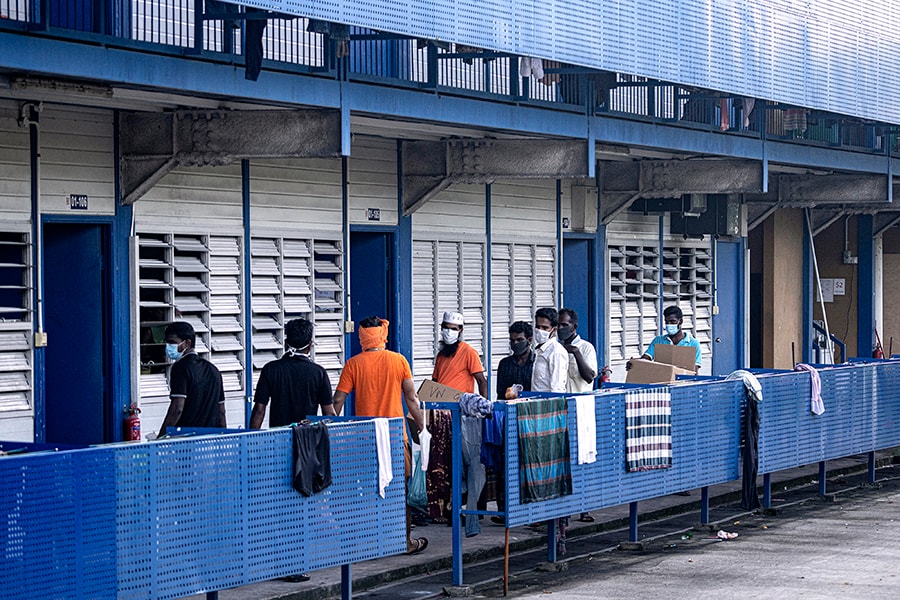
Packed with migrant workers, dormitories fuel coronavirus in Singapore
Singapore Health Ministry officials suspect that Mustafa Center, a 400,000-square-foot mall, is the starting point for the infections at the dormitories. The shopping center is popular among migrant workers, local residents and tourists
 The S11 Dormitory, home to migrant workers, in the Tuas area of Singapore, April 8, 2020. Singapore has seen a surge of coronavirus cases among migrant workers, after months of successfully controlling the outbreak. (Ore Huiying/The New York Times)
The S11 Dormitory, home to migrant workers, in the Tuas area of Singapore, April 8, 2020. Singapore has seen a surge of coronavirus cases among migrant workers, after months of successfully controlling the outbreak. (Ore Huiying/The New York Times)
Singapore has seen a surge of coronavirus cases among migrant workers, after months of successfully controlling the outbreak. As of Tuesday, coronavirus cases linked to migrant worker dormitories accounted for 88% of Singapore’s 14,446 cases, including more than 1,400 new cases in a single day.
Singapore has extensively traced the close contacts of each person infected with the coronavirus and released detailed information about clusters of cases. An analysis of the data shows how the virus has spread rapidly among migrant worker dormitories.
Many migrant workers live in packed dormitories on the outskirts of the city. These dormitories can house up to 20 people per room, making it almost impossible to follow social distancing guidelines. Migrant workers around the world have been among the most vulnerable groups affected by the pandemic.
The government has directed all laborers living in dormitories to stop working until Monday, imposing a stay-at-home order for 180,000 foreign workers in the construction sector. The government has also declared 25 dormitories as isolation areas, where workers are confined to their rooms.
Transient Workers Count Too, an advocacy group for migrant workers in Singapore, criticized the government’s plan to quarantine such a large population together. The group compared the lockdown with situations on cruise ships in which cases multiplied uncontrollably even when passengers were kept to their rooms.
©2019 New York Times News Service




